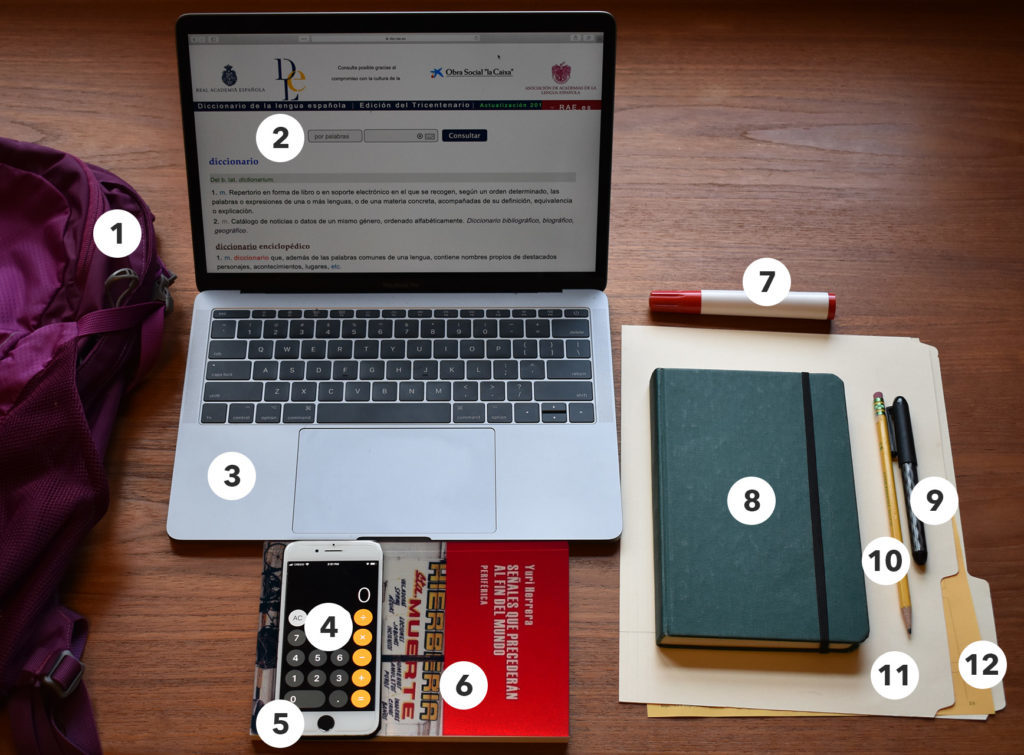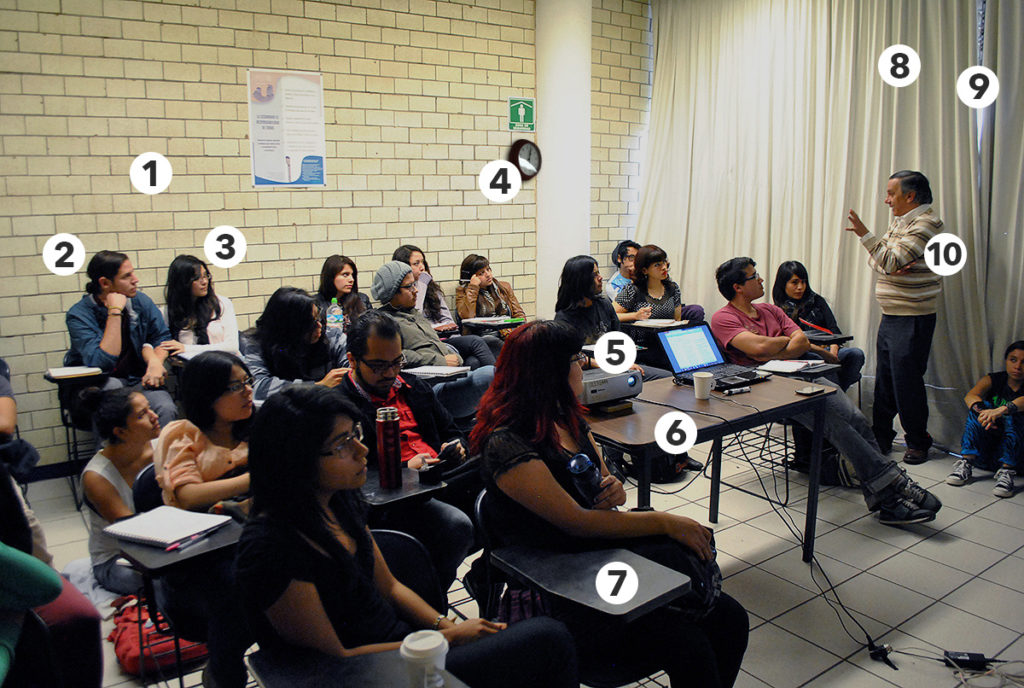1.21: Putting It Together- ¡Hola! ¿Cómo te llamas?
- Page ID
- 113865
\( \newcommand{\vecs}[1]{\overset { \scriptstyle \rightharpoonup} {\mathbf{#1}} } \)
\( \newcommand{\vecd}[1]{\overset{-\!-\!\rightharpoonup}{\vphantom{a}\smash {#1}}} \)
\( \newcommand{\id}{\mathrm{id}}\) \( \newcommand{\Span}{\mathrm{span}}\)
( \newcommand{\kernel}{\mathrm{null}\,}\) \( \newcommand{\range}{\mathrm{range}\,}\)
\( \newcommand{\RealPart}{\mathrm{Re}}\) \( \newcommand{\ImaginaryPart}{\mathrm{Im}}\)
\( \newcommand{\Argument}{\mathrm{Arg}}\) \( \newcommand{\norm}[1]{\| #1 \|}\)
\( \newcommand{\inner}[2]{\langle #1, #2 \rangle}\)
\( \newcommand{\Span}{\mathrm{span}}\)
\( \newcommand{\id}{\mathrm{id}}\)
\( \newcommand{\Span}{\mathrm{span}}\)
\( \newcommand{\kernel}{\mathrm{null}\,}\)
\( \newcommand{\range}{\mathrm{range}\,}\)
\( \newcommand{\RealPart}{\mathrm{Re}}\)
\( \newcommand{\ImaginaryPart}{\mathrm{Im}}\)
\( \newcommand{\Argument}{\mathrm{Arg}}\)
\( \newcommand{\norm}[1]{\| #1 \|}\)
\( \newcommand{\inner}[2]{\langle #1, #2 \rangle}\)
\( \newcommand{\Span}{\mathrm{span}}\) \( \newcommand{\AA}{\unicode[.8,0]{x212B}}\)
\( \newcommand{\vectorA}[1]{\vec{#1}} % arrow\)
\( \newcommand{\vectorAt}[1]{\vec{\text{#1}}} % arrow\)
\( \newcommand{\vectorB}[1]{\overset { \scriptstyle \rightharpoonup} {\mathbf{#1}} } \)
\( \newcommand{\vectorC}[1]{\textbf{#1}} \)
\( \newcommand{\vectorD}[1]{\overrightarrow{#1}} \)
\( \newcommand{\vectorDt}[1]{\overrightarrow{\text{#1}}} \)
\( \newcommand{\vectE}[1]{\overset{-\!-\!\rightharpoonup}{\vphantom{a}\smash{\mathbf {#1}}}} \)
\( \newcommand{\vecs}[1]{\overset { \scriptstyle \rightharpoonup} {\mathbf{#1}} } \)
\( \newcommand{\vecd}[1]{\overset{-\!-\!\rightharpoonup}{\vphantom{a}\smash {#1}}} \)
\(\newcommand{\avec}{\mathbf a}\) \(\newcommand{\bvec}{\mathbf b}\) \(\newcommand{\cvec}{\mathbf c}\) \(\newcommand{\dvec}{\mathbf d}\) \(\newcommand{\dtil}{\widetilde{\mathbf d}}\) \(\newcommand{\evec}{\mathbf e}\) \(\newcommand{\fvec}{\mathbf f}\) \(\newcommand{\nvec}{\mathbf n}\) \(\newcommand{\pvec}{\mathbf p}\) \(\newcommand{\qvec}{\mathbf q}\) \(\newcommand{\svec}{\mathbf s}\) \(\newcommand{\tvec}{\mathbf t}\) \(\newcommand{\uvec}{\mathbf u}\) \(\newcommand{\vvec}{\mathbf v}\) \(\newcommand{\wvec}{\mathbf w}\) \(\newcommand{\xvec}{\mathbf x}\) \(\newcommand{\yvec}{\mathbf y}\) \(\newcommand{\zvec}{\mathbf z}\) \(\newcommand{\rvec}{\mathbf r}\) \(\newcommand{\mvec}{\mathbf m}\) \(\newcommand{\zerovec}{\mathbf 0}\) \(\newcommand{\onevec}{\mathbf 1}\) \(\newcommand{\real}{\mathbb R}\) \(\newcommand{\twovec}[2]{\left[\begin{array}{r}#1 \\ #2 \end{array}\right]}\) \(\newcommand{\ctwovec}[2]{\left[\begin{array}{c}#1 \\ #2 \end{array}\right]}\) \(\newcommand{\threevec}[3]{\left[\begin{array}{r}#1 \\ #2 \\ #3 \end{array}\right]}\) \(\newcommand{\cthreevec}[3]{\left[\begin{array}{c}#1 \\ #2 \\ #3 \end{array}\right]}\) \(\newcommand{\fourvec}[4]{\left[\begin{array}{r}#1 \\ #2 \\ #3 \\ #4 \end{array}\right]}\) \(\newcommand{\cfourvec}[4]{\left[\begin{array}{c}#1 \\ #2 \\ #3 \\ #4 \end{array}\right]}\) \(\newcommand{\fivevec}[5]{\left[\begin{array}{r}#1 \\ #2 \\ #3 \\ #4 \\ #5 \\ \end{array}\right]}\) \(\newcommand{\cfivevec}[5]{\left[\begin{array}{c}#1 \\ #2 \\ #3 \\ #4 \\ #5 \\ \end{array}\right]}\) \(\newcommand{\mattwo}[4]{\left[\begin{array}{rr}#1 \amp #2 \\ #3 \amp #4 \\ \end{array}\right]}\) \(\newcommand{\laspan}[1]{\text{Span}\{#1\}}\) \(\newcommand{\bcal}{\cal B}\) \(\newcommand{\ccal}{\cal C}\) \(\newcommand{\scal}{\cal S}\) \(\newcommand{\wcal}{\cal W}\) \(\newcommand{\ecal}{\cal E}\) \(\newcommand{\coords}[2]{\left\{#1\right\}_{#2}}\) \(\newcommand{\gray}[1]{\color{gray}{#1}}\) \(\newcommand{\lgray}[1]{\color{lightgray}{#1}}\) \(\newcommand{\rank}{\operatorname{rank}}\) \(\newcommand{\row}{\text{Row}}\) \(\newcommand{\col}{\text{Col}}\) \(\renewcommand{\row}{\text{Row}}\) \(\newcommand{\nul}{\text{Nul}}\) \(\newcommand{\var}{\text{Var}}\) \(\newcommand{\corr}{\text{corr}}\) \(\newcommand{\len}[1]{\left|#1\right|}\) \(\newcommand{\bbar}{\overline{\bvec}}\) \(\newcommand{\bhat}{\widehat{\bvec}}\) \(\newcommand{\bperp}{\bvec^\perp}\) \(\newcommand{\xhat}{\widehat{\xvec}}\) \(\newcommand{\vhat}{\widehat{\vvec}}\) \(\newcommand{\uhat}{\widehat{\uvec}}\) \(\newcommand{\what}{\widehat{\wvec}}\) \(\newcommand{\Sighat}{\widehat{\Sigma}}\) \(\newcommand{\lt}{<}\) \(\newcommand{\gt}{>}\) \(\newcommand{\amp}{&}\) \(\definecolor{fillinmathshade}{gray}{0.9}\)See the review summaries below to help you complete the assignments and prepare for the quiz to demonstrate your mastery of the objectives.
Vocabulario: Saludos y respuestas
Saludos y respuestas (Greetings and Responses)
| Hola Hello | |
| Estoy muy bien. I am very well. | |
| Buenos días Good morning |
|
| Estoy bastante bien. I am quite well. |
|
| Buenas tardes Good afternoon |
|
| Buenas noches Good evening |
|
| Estoy más o menos. I am ok. |
|
| Estoy regular. I am ok. |
|
| Estoy mal. I’m sick / I’m not doing well. |
|
| ¿Cómo está (usted)? (formal) How are you? |
|
| ¿Cómo estás (tú)? (informal) How are you? |
|
| ¿Qué tal? (informal) How’s it going? |
|
| Gracias, ¿y usted? (formal) Thank you, and you? |
|
| Gracias, ¿y tú? (informal) Thank you, and you? |
|
| Estoy bien. I am well. |
|
*Note: “así así” (so-so) is an expression commonly heard in American movies where Spanish speaking characters are portrayed. However, this expression is not accurate. The accurate way to say that you are “so-so” or “ok” is “más o menos” or “regular“.
| Presentaciones (Introductions) | |
| ¿Cómo se llama usted? (formal) What is your name? | |
| ¿De dónde es usted? (formal) Where are you from? | |
| ¿Cómo te llamas? (informal) What is your name? | |
| ¿De dónde eres? (informal) Where are you from? | |
| Esta es… This is… (introducing a female) | |
|
Este es… This is… (introducing a male) |
|
| Este es Pablo y esta es María. This is Pablo and this is María. |
Soy de…I am from…
| Soy de Perú. I am from Peru. | |
| Me llamo… My name is / I call myself… | |
| Mi nombre es… My name is… | |
| Te presento a… (informal) May I present… | |
| Pedro, te presento a Pablo. Pedro, may I present Pablo. / Pedro, I’d like to introduce Pablo. | |
| Encantado Delighted / Nice to meet you. (say if you are male.) | |
| Encantada Delighted/Nice to meet you. (say if you are female.) | |
| Encantada de conocerte. (informal) Nice to meet you. | |
| El gusto es mío. The pleasure is mine. | |
| Mucho gusto Nice to meet you. | |
| Igualmente Same / Likewise | |
| Sra. (señora) Mrs. | |
| Sr. (señor) Mr. | |
| Srta. (señorita) Miss | |
| Sr. López, le presento a Pablo. Mr. Lopez, may I present Pablo / let me introduce you to Pablo. |
Le presento a … (formal) May I present… / Let me introduce you to…
Despedidas (Farewells)
| Adiós Goodbye | |
| Chao (sometimes spelled chau) ‘Bye | |
| Hasta luego See you later |
|
| Hasta mañana See you tomorrow |
|
| Hasta pronto See you soon |
|
| ¡Nos vemos! See you (later) |
|
Vocabulario: En el salón de clase
En la mochila del estudiante (in the student’s backpack)

|
1.la mochila (backpack) |
|
| 2. el diccionario (dictionary) | |
| 3. la computadora (computer) | |
| 4. la calculadora (calculator) | |
| 5. el teléfono (telephone) | |
| 6. el libro (book) | |
| 7. el marcador (marker) | |
| 8. el cuaderno (notebook) | |
| 9. el bolígrafo (pen) | |
| 10. el lápiz (pencil) | |
| 11. la carpeta (folder/ binder) | |
| 12. el papel (paper), la hoja de papel (piece of paper) | |
| 13. el escritorio (desk) |

En la clase (in the class)
| 1. la pared (wall) | |
| 2. el estudiante (student, m) | |
| 3. la estudiante (student, f) | |
| 4. el reloj (clock) | |
| 5. el proyector (projector) | |
| 6. la mesa (table) | |
| 7. el pupitre (student’s desk) | |
| 8. la cortina (curtain) | |
| 9. la ventana (window) | |
| 10. el profesor, la profesora (professor, m, f) |

En el salón de clase (in the classroom)
| 1. la luz (light) |
|
| 2. el mapa (map) | |
| 3. la pizarra (chalkboard/ whiteboard) | |
| 4. la tiza (chalk) | |
| 5. la puerta (door) | |
| 6. la silla (chair) | |
| 7. la basura (trash) |
Una palabra útil (a useful word):
hay (there is / there are; “hay” is an invariable verb that is only used to talk about the existence or presence, or the quantity of things.)
Vocabulario: Números 0-31
| 0 cero |
|
| 1 uno | |
| 2 dos | |
| 3 tres | |
| 4 cuatro | |
| 5 cinco | |
| 6 seis | |
| 7 siete | |
| 8 ocho | |
| 9 nueve | |
| 10 diez | |
| 11 once | |
| 12 doce | |
| 13 trece | |
| 14 catorce | |
| 15 quince | |
| 16 dieciséis | |
| 17 diecisiete | |
| 18 dieciocho | |
| 19 diecinueve | |
| 20 veinte | |
| 21 veintiuno | |
| 22 veintidós | |
| 23 veintitrés | |
| 24 veinticuatro | |
| 25 veinticinco | |
| 26 veintiséis | |
| 27 veintisiete | |
| 28 veintiocho | |
| 29 veintinueve | |
| 30 treinta | |
| 31 treinta y uno |
Use definite and indefinite articles
Definite articles:
| masculino | femenino | |
| singular | el | la |
| plural | los | las |
Indefinite articles:
| masculino | femenino | |
| singular | un | una |
| plural | unos | unas |
Contributors and Attributions
- Putting It Together: Putting It Together: u00a1Hola! u00bfCu00f3mo te llamas?. Authored by: Lumen Learning. License: CC BY: Attribution


